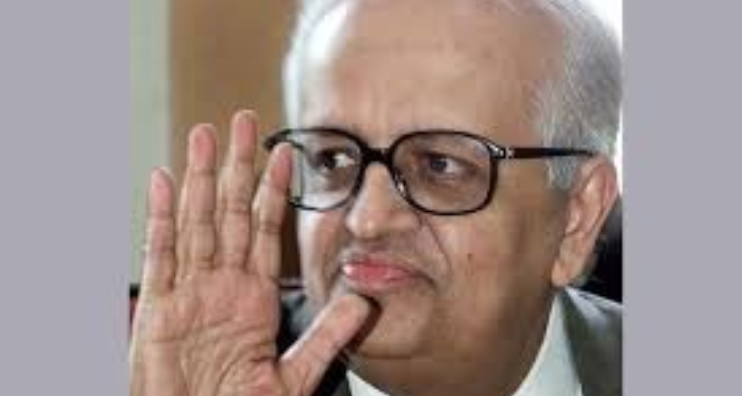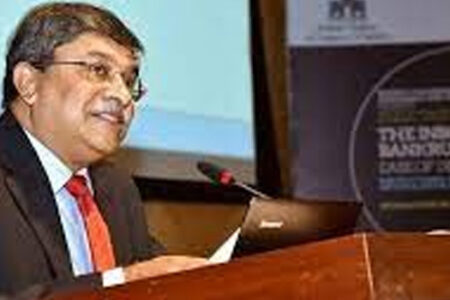The Reserve Bank of India (RBI) modelled its official emblem on the double mohur of the East India Company. The lion under a palm tree on the logo later gave way to a tiger to represent India better.
Last week, after the Indian central bank announced transferring Rs 1.76 trillion to the government (of this, Rs 28,000 crore was given as interim dividend in March 2019), a meme was doing the rounds in social media, taking the flesh out of the large feline of forests, making it a skeleton.
The record money transfer includes Rs1.23 trillion surplus of the year (RBI follows July-June financial year) and another Rs52,637 crore one-time transfer, in accordance with the recommendations of the six-member panel, headed by former RBI governor Bimal Jalan, set up in December 2018 to look into the so-called economic capital of the Indian central bank.
There have been many reports on how the central bank has been raided, looted, and even turned into an LIC for the government. (Life Insurance Corporation of India or LIC typically comes to the rescue of troubled financial institutions; the latest example being IDBI Bank Ltd).
The noise started building up even before the panel was formed when a finance ministry bureaucrat wanted as much as Rs3.6 trillion from the RBI. As member of the committee, he had raised his voice of dissent but had to leave the panel because of a reshuffle in the bureaucracy after the Union Budget. In search of consensus, the panel missed the deadline for submitting the report. The contentious subject also scalped a governor and led to an early exit of a deputy governor.
Has the panel played the role of a government agent and milked the central bank’s balance sheet dry to help government spend and bring down the fiscal deficit?
For the fiscal year ending July 2019, the RBI’s assets are to the tune of Rs 41 trillion. Of this, investments in domestic securities are Rs9.9 trilion and foreign currency and gold Rs29.5 trillion. The income from domestic sources rose from Rs509 billion to Rs1.18 trillion because of the increase in interest income. Following a change in the accounting norms, the income from foreign currency assets too rose. The combination led to higher transfer of money to the government.
That’s an annual ritual. Most media reports had speculated on a transfer of extra money in a staggered way over the next few years. In reality, there is a one-time transfer of Rs52,637 crore to the government’s coffers. How has this been generated?
Unlike a commercial bank, a central bank does not need to adhere to a capital adequacy ratio. The so-called economic capital (or reserves) of the Indian central bank has four components – the paid-up capital (Rs 5 crore since its inception); asset development fund (Rs228.75 billion), used for investing in various subsidiaries of the RBI; contingency fund (close to Rs2 trillion), equivalent to investment fluctuation reserves of commercial banks for taking care of any notional losses of its assets; and the revaluation reserves (Rs7.3 trillion).
The revaluation reserves, roughly 79 per cent of the total economic capital of the RBI, are something intangible which can’t be felt and touched. The foreign exchange assets are marked to market every week to show their current market value as opposed to the cost at which they were bought while gold assets are marked to market every month. The gains (or losses) create the revaluation reserves.
There were apprehensions that the Jalan panel will swoop down on the revaluation reserves. It has not done that. In fact, it has recommended a one-way transfer – if the value goes down, it needs to be replenished but gains cannot be booked.
It has also fixed a band for the contingency reserve – 5.5-6.5 per cent. The RBI board has decided to keep it at 5.5 per cent. This is lower than 6.8 per cent, the last year’s level, but definitely not something that amounts to looting of the RBI.
Till now, every year the RBI has been transferring part of its surpluses to the contingency reserves. Following a 1997 panel’s recommendation, it was 12 per cent; another panel in 2004 recommended a higher flow at 18 per cent but that was not accepted. Finally, in 2013, yet another panel, headed by noted chartered accountant and long-time director on the RBI board YH Malegam recommended transfer of an “adequate amount of its profit” to the contingency reserves, without specifying it in percentage term. The Jalan panel has shifted the focus from a percentage of profits to assets, and rightly so.
It has also recommended a 20-24.5 per cent band for the size of the economic capital; the board has kept it at 23.3 per cent this time. This is lower than the level of last year, around 27 per cent.
Besides not touching the revaluation reserves, the panel has put in place a framework and asked for periodic evaluation of this every five years. This means at least for the next five years the quantum of money that will go the government’s coffers won’t depend on the whims and fancy of any bureaucrat or minister.
It has also expressed reservations about the RBI giving interim dividend to the government and is in favour of shifting its financial year from July-June to April-March, in sync with the government’s accounting year.
This is Jalanomics at its best. It has not poured; or, even rained for the government. It just drizzled but even that’s good for a perched earth of government finance.
POSTSCRIPT:
One caveat though: Can part of the revaluation reserves be transferred to the profit and loss account by actual transactions? The change in the methodology of calculating income from foreign exchange reserves – weighted average cost of reserves — will entail profit-booking on every sale of foreign exchange. In some sense, this is akin to a transfer out of the revaluation reserves to income. I am told this had been recommended earlier by the Malegam panel and the Jalan panel merely endorsed it.
The paradox is that if the rupee weakens during any year, the RBI will end up booking profits while selling dollars to defend the currency.



